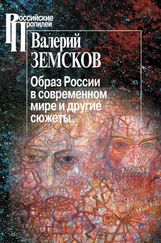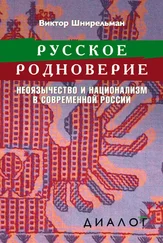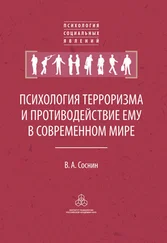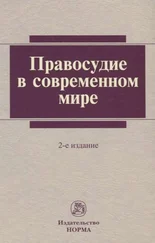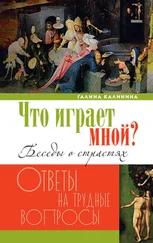Spielvogel, J. and Redles D. 1986. Hitler’s racial ideology: content and occult sources // Simon Wiesenthal Center Annual, vol. 3: 227–246.
Sternhell, Z. 1976. Fascist ideology // W. Laqueur (ed.). Fascism. A reader’s guide, p. 315–376. Cambridge: Cambridge University Press.
Stites, Richard 1992. Russian popular culture: entertainment and society since 1900. Cambridge: Cambridge University Press.
Stodolsky, Igor 2007. Cultural geopolitics in the New Russian Intelligentsia. A case study of Timur Novikov, artist and cultural ideologist, 1958–2002 // M. Henriksson, S. Bovnik (eds.). Contemporary art and nationalism, p. 126–153. Prishtine: Prishtine Institute for contemporary art “EXIT”.
Subtelny, Maria Eva 1994. The symbiosis of Turk and Tajik // Beatrice F. Manz (ed.). Central Asia in historical perspective, p. 45–61. Boulder: Westview.
Swarup, D. 1994. Editorial // Manthan, vol. 15, no. 2–3: 3–6.
Szporluk, Roman 1989. Dilemmas of Russian nationalism // Problems of communism, July-August, p. 15–35.
Talageri Shrikant G. 1993. The Aryan invasion theory. A reappraisal. New Delhi: Aditya Prakashan.
Talageri, Shrikant G. 1994. Invasion theory and Indian nationalism // Manthan, vol. 15, no. 2–3: 119–125.
Thapar, Romila 1989. Imagined religious communities? Ancient history and the modern search for a Hindu identity // Modern Asian Studies, vol. 23, no. 2: 209–231.
Thapar, Romila 1989–1991. Archaeology and language at the roots of Ancient India // Journal of the Asiatic Society of Bombay, vol. 64–66. P. 249–268.
Thapar, Romila 1996. The theory of Aryan race and India: history and politics // Social Scientist, vol. 24, no. 272–274: 3 – 29.
Thapar, Romila 2000a. Interpreting early India // Thapar, Romila. History and beyond. New Delhi: Oxford Uiversity Press.
Thapar, Romila 2000b. Time as a metaphor of history // Thapar, Romila. History and beyond. New Delhi: Oxford Uiversity Press.
Thapar, Romila 2000c. On historical scholarship and the uses of the past // Ethnic and racial studies, vol. 23, no. 3: 594–616.
Thapar, Romila 2000d. Hindutva and history. Why do Hindutva ideologues keep flogging dead horse // Frontline, October 2000: 15–16.
Trautmann, Thomas R. 1997. Aryans and the British India. Berkeley: Univ. of California Press.
Verma, K. C. 1984. The Aryans, the Veda and the Kaliyuga era of 3100 B. C. Varanasi: Dept. of Ancient Indian History, Culture and Archaeology.
Viereck, Peter 1965. Metapolitics. The roots of the Nazi mind. N. Y.: Capricorn Books.
Walicki, A. 1975. The Slavophile controversy. Oxford: Clarendon Press.
Weissmann, Karlheinz 1991a. Druiden, Goden, Weise Frauen. Freiburg: Herder.
Weissmann, Karlheinz 1991b. Schwarze Fahnen, Runenzeichen. Die Entwicklung der politischen Symbolik der deutschen Rechten zwischen 1890 und 1945. Dusseldorf: Droste.
Who is… 1984. Who is spiritual teacher Lev Sylenko. Spring Glen, N. Y.: The Ukrainian Native Faith.
Wilson, Andrew 2002. Elements of a theory of Ukrainian ethno-national identities // Nations and nationalism, vol. 8, no. 1: 31–54.
Wilson, Stephen 1982. Ideology and experience: antisemitism in France at the time of the Dreyfus affair. Rutherford, N. J.: Fairleigh Dickinson University Press.
Winn, Sh. M. M. 1982. Pre-writing in Southeastern Europe: the sign system of the Vinca culture ca. 4000 B. C. Calgary, Alta.: Western Publishers.
Williams, Stephen 1991. Fantastic archaeology. The wild side of North American prehistory. Philadelphia: University of Pennsylvania Press.
Wistrich, Robert S. 1991. Antisemitism. The longest hatred. London: Themes Methuen.
Witzel M., Farmer S. 2000. Horseplay in Harappa. The Indus Valley Decipherment Hoax // Frontline, September 30 – October 13.
Wiwjorra, Ingo 1996. German archaeology and its relation to nationalism and racism // Margarita Diaz-Andreu, Timothy Champion (eds.). Nationalism and archaeology in Europe, p. 164–188. London: UCL Press.
Wolpert, S. A. 1962. Tilak and Gokhale: revolution and reform in the making of modern India. Berkeley: Univ. of California Press.
Yanov, A. 1987. The Russian challenge and the year 2000. Oxford: Basil Blackwell.
Интересно, что греческие авторы эпохи эллинизма вначале отличали ариан/ариев от парфян, бактрийцев, согдийцев и даже скифов. Но позднее это представление о различиях было утрачено (Пьянков 1995: 48–50).
Эту тему специально рассматривала только французская исследовательница М. Ларюэль, но лишь в применении к XIX в.
Эту идею он взял у британских авторов второй половины XVIII в. (Trautmann 1997: 65–66).
О том, как в Англии индомания быстро сменилась индофобией, см.: (Trautmann 1997: 99 – 130).
Например, о британской индомании см.: (Trautmann 1997: 62–98).
Раскопки их столицы Авариса в 1980-х гг. убедительно доказали их связь с Левантом.
О Гобино см.: (Biddiss 1970; Гофман 1977; Поляков 1996: 250–255).
Затем миф о расположенной под землей Асгартхе-Асгарде, открывавшейся только посвященным, развивал эзотерик Сент-Ив д’Альвейдр.
Впервые термин «яфетические» для европейских языков ввел в 1767 г. Джеймс Парсонс.
Это особенно отчетливо прозвучало в его книге «Слово Христово».
Книга Чемберлена «Основания девятнадцатого столетия» вышла в 2012 г. на русском языке. Его творчество пропагандирует «Институт русской цивилизации» О. Платонова, где его называют «видным английским ученым», а его труды рекомендуют как «золотой фонд мировой науки». См.: (Чемберлен, Коннер 2009: 251).
Недавно его рассуждения на эту тему были опубликованы московским издательством (Чемберлен, Коннер 2009). В этой книге под одной обложкой были помещены работы двух западных писателей-антисемитов, стремившихся любыми способами доказать, что Христос не был евреем.
Правда, Древс был убежден в мифологичности фигуры Иисуса Христа.
Примечательно, что идея очищения христианства от «еврейского духа» занимала в 1930-х гг. и некоторых румынских интеллектуалов, питавших слабость к Железной гвардии, местной разновидности фашизма в Румынии (Ленель-Лавастин 2012: 216–217).
Читать дальше
Конец ознакомительного отрывка
Купить книгу
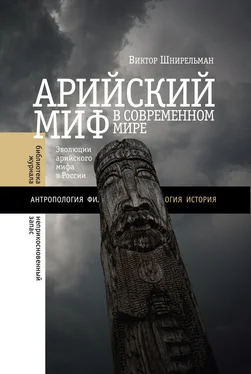
![Евгений Примаков - Россия в современном мире. Прошлое, настоящее, будущее [сборник]](/books/27003/evgenij-primakov-rossiya-v-sovremennom-mire-proshlo-thumb.webp)


